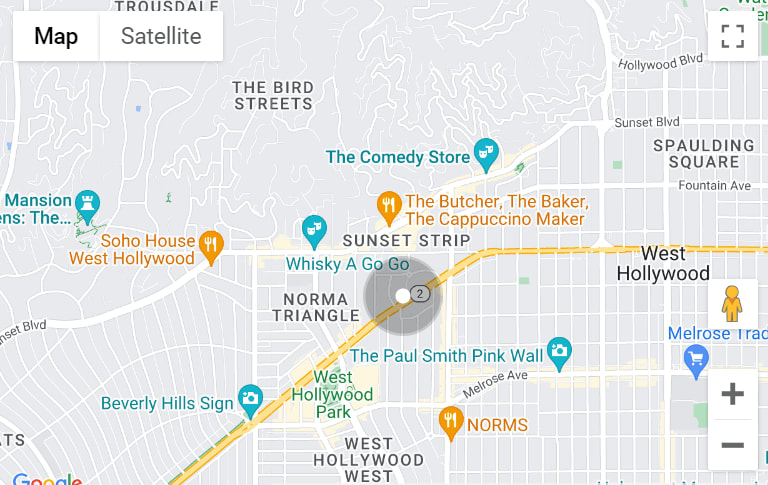Newton, Massachusetts, is a city steeped in history and architectural beauty. Its landscape is dotted with remarkable structures that reflect a wide array of architectural styles, each telling a unique story of the city’s development. From colonial-era homes to modernist masterpieces, Newton's architecture offers a fascinating glimpse into the past and present, making it an ideal place for those who appreciate design and history.
The Colonial Heritage
Newton's architectural journey begins with its colonial heritage. The Jackson Homestead, built in 1809, stands as a testament to this era. This Federal-style home, now the Jackson Homestead and Museum, was once a stop on the Underground Railroad. Its symmetrical design, elegant details, and historical significance make it a cornerstone of Newton's architectural landscape. Walking through its halls offers a glimpse into the early 19th century, highlighting how architecture served both functional and symbolic purposes during this period.
Victorian Elegance
As Newton grew, so did its architectural diversity. The Victorian era brought with it an explosion of styles, from Queen Anne to Gothic Revival. One standout example is the Durant-Kenrick House. Originally built in 1734 and remodeled in the 1860s, this house showcases the eclectic mix of Victorian tastes. The intricate woodwork, vibrant colors, and asymmetrical design elements are characteristic of the era's emphasis on ornamentation and individuality.
Another notable Victorian structure is the Isaac Fiske House. This Italianate-style home, built in the mid-19th century, features tall windows, a low-pitched roof, and wide eaves with decorative brackets. Its grandeur and attention to detail reflect the prosperity and aspirations of Newton's residents during the Victorian period.
The Rise of the Arts and Crafts Movement
The turn of the 20th century saw the rise of the Arts and Crafts movement, which emphasized handcrafted quality and natural materials. The Hammond House, built in 1902, is a prime example. Designed by Boston architect Arthur Little, this house blends elements of Colonial Revival with Arts and Crafts principles. The use of local materials, such as stone and wood, and the integration of the house with its natural surroundings exemplify the movement's ideals.
Modernist Innovations
Newton’s architectural narrative continued to evolve through the 20th century with the advent of modernism. The Gropius House, although located in nearby Lincoln, had a profound influence on the area, including Newton. Designed by Bauhaus founder Walter Gropius, it introduced the principles of modernism to New England. In Newton, this influence is visible in several mid-century modern homes that emphasize simplicity, functionality, and integration with the landscape.
One notable example within Newton is the House at 152 Suffolk Road, designed by Carl Koch in the 1940s. This house embodies modernist principles with its flat roof, large windows, and open floor plan. Koch’s use of prefabricated materials and innovative construction techniques made modernist design more accessible and affordable, contributing to its popularity in the region.
Preserving the Past, Embracing the Future
Newton's commitment to preserving its architectural heritage while embracing contemporary design is evident in the careful restoration and adaptive reuse of historic buildings. The Newton Free Library is a prime example. Originally built in 1870 in the Richardsonian Romanesque style, it underwent a significant expansion in the late 20th century. The new design seamlessly blends old and new, respecting the building’s historical character while providing modern amenities.
Similarly, the Newton City Hall, built in 1932 in the Classical Revival style, has been meticulously maintained. Its grand columns, detailed cornices, and imposing façade reflect the city’s dedication to preserving its architectural history.
The Role of Newton’s Neighborhoods
Each neighborhood in Newton offers its own unique architectural charm. For instance, Chestnut Hill is known for its luxurious estates and grand mansions, many of which showcase Colonial Revival and Tudor Revival styles. The area around Newton Centre, on the other hand, features a mix of Victorian and early 20th-century homes, reflecting the city’s growth during that period. Waban, another historic neighborhood, is home to numerous Arts and Crafts-style houses.
These homes, with their emphasis on craftsmanship and harmony with nature, provide a peaceful and aesthetically pleasing environment. Meanwhile, West Newton Hill boasts a diverse array of architectural styles, from Greek Revival to contemporary, highlighting the city’s evolution over the centuries.
Architectural Tours and Community Involvement
Newton’s rich architectural heritage is not just for passive admiration. The city actively promotes its history through various tours and community events. Organizations like Historic Newton offer guided tours of significant landmarks, providing residents and visitors with deeper insights into the stories behind these buildings. These tours are not only educational but also foster a sense of community and appreciation for Newton’s unique architectural character.
The Future of Newton’s Architecture
As Newton continues to grow and evolve, its architectural landscape will undoubtedly reflect new trends and innovations. However, the city’s commitment to preserving its historical roots ensures that future developments will respect and enhance its rich architectural tapestry. Sustainable design, adaptive reuse of historic buildings, and thoughtful urban planning are likely to shape the next chapter in Newton’s architectural story.
Discover the Beauty of Newton
Newton, Massachusetts, offers a remarkable journey through architectural history. From colonial homes to modernist marvels, the city’s buildings tell the story of its growth, diversity, and commitment to preserving its heritage. For those interested in exploring the architectural gems of Newton, there is no shortage of landmarks to admire and learn from.
For more information about Newton's architectural treasures and to discover homes that capture the essence of this historic city, contact
Colin Bayley. Explore more with Colin Bayley and start your journey into the architectural wonders of Newton today.
*Header photo courtesy of the City of Newton

